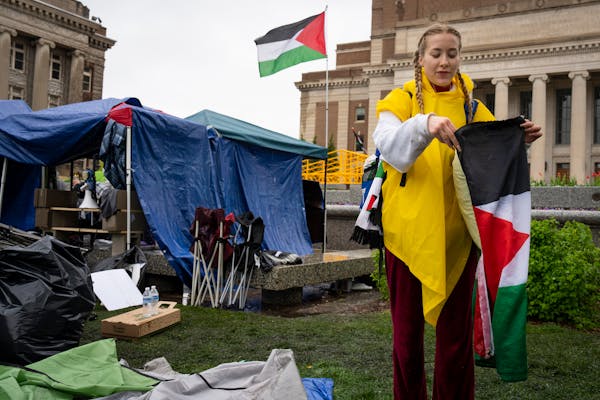A sports fanatic who knew how to work the phones and rally people behind a cause, Charlie Disney owned and operated the largest for-profit table-tennis club in the United States.
Later in life he turned his organizing skills to the rights of rental property owners, leading a fight against what he and others perceived as a hostile city inspections department.
"He had the unique knack of leading," said Don Larson, who co-founded the table tennis club with him. "He just had a way of networking people that I've never seen."
Disney died last week at his winter home in Rio Verde, Ariz. He was 72.
Born Dec. 3, 1941, he grew up in Edina. His father, a teacher, died when Charlie was 9. His mother worked as a school secretary. Charlie worked part-time jobs in high school, mowing lawns and busing tables at the Convention Grill.
"He was a very outgoing person, a very extroverted person," said Susie Kanemitsu, his younger sister, who lives in Minneapolis. "I thought of him as my best friend when I was little."
After studying at Dunwoody College and a brief stint at the Minnesota Department of Transportation, Disney moved to Minneapolis and took a job as a stockbroker for Dain, Kalman & Quail.
He grew up playing table tennis in his family's basement and in 1969 established Magoo's Table Tennis Club on Nicollet Avenue. Later it became Disney's Table Tennis Center on Lake Street. The club was in operation in some form until the mid-1990s. Disney coached table tennis players and led efforts to organize tournaments, leagues and a huge junior program. He was also a 10-time Minnesota state table tennis champion.
He was a delegate with the U.S. team at the World Table Tennis Championships in Nagoya, Japan, in 1971, when Chinese and American players brushed shoulders. Events moved quickly, and a few days later a handful of U.S. table-tennis players became the first American delegation to visit Beijing since 1949.
Disney was not among them. He said later he didn't go with the players to China because he thought he needed to quickly return to his job in Minnesota. The "Ping-Pong diplomacy" that Disney witnessed helped open the door for Richard Nixon's historic visit to China less than a year later.
In the mid-1980s, Disney began to buy rental properties, mostly in the Phillips and Whittier neighborhoods of south Minneapolis. He was angered by what he considered "inspections harassment" from the city, and in 1994 he helped start the Minneapolis Property Rights Action Committee. The group launched a campaign arguing that city officials were trying to scapegoat property owners for the city's crime problems.
Disney hosted a cable television show, and the group started a free newspaper. They conducted "Minneapolis crack tours" where they would pose as suburbanites looking for drugs, then renege on the deal. Disney would put a judge, City Council member or member of Congress in the back seat to witness the whole thing, even as police cruised by.
"The implication was obvious," said Bill McGaughey, a friend and colleague of Disney's. "Minneapolis was out of control, and the police weren't doing anything."
Disney tried to run for mayor in 2001 but withdrew from the race when he suffered two heart attacks. He eventually received a heart transplant and started spending his winters in Rio Verde. He lived in Roseville during the summer.
Disney was married and divorced twice. He is survived by his sister.
Souhan: A sausage? A knee surgery? Minnesota sports has gone mad

